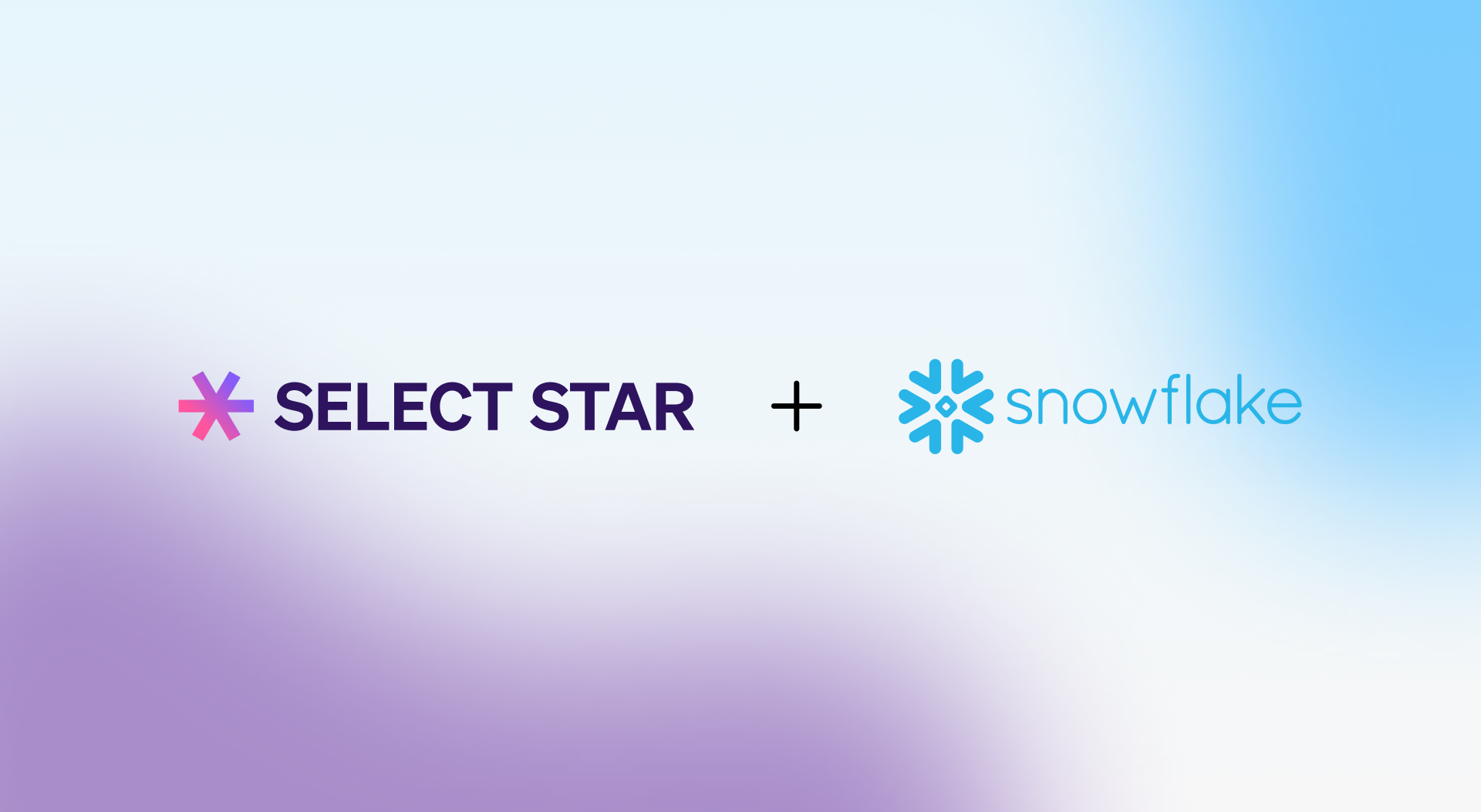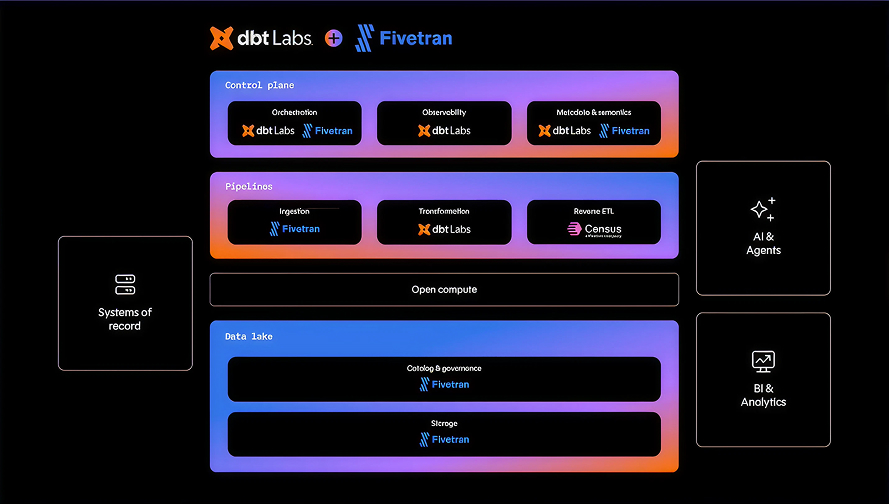Text‑to‑SQL tools allow users to write plain‑language queries like, “Show me revenue by state for Q1” and automatically transform them into executable SQL. This drastically lowers the barrier to data access and speeds up analytic workflows.
These tools are powering the growing trend of natural language interfaces in analytics, letting analysts, product managers, and business users explore data without needing to write queries manually.
At Select Star, we've worked with organizations to implement self-service analytics and have seen firsthand how text-to-SQL capabilities are transforming data teams. In this post, we’ll introduce what text‑to‑SQL is, evaluate the top tools on the market in 2025, explore core features to look for, and take a glimpse at where this space is heading.
What Is Text‑to‑SQL?
Text‑to‑SQL is a system that translates a natural‑language question into a valid SQL query. A user types or speaks a question. The tool parses it using NLP, understands your schema context, and generates SQL code that runs against your warehouse or data platform.
Benefits of Text-to-SQL
- Faster insights: no more manual SQL drafting
- Democratizes access: business users can self‑serve
- Scales analytics: analysts spend less time on repetitive queries
Limitations of Text-To-SQL
- Complex queries: May struggle with nested or multi-step logic
- Contextual understanding: Can misinterpret domain-specific language
- Query precision: Accuracy may drop for nuanced use cases
Read more on why LLMs struggle with text-to-sql.
Top Text-to-SQL Tools for 2025
We’ve categorized today’s leading text-to-SQL tools and features based on their architectural flexibility and integration depth. Some work across multiple platforms and are schema-aware, meaning they understand your data’s structure and relationships. Others are purpose-built for specific data ecosystems, which allows for a seamless native experience but can be limiting if your stack includes tools or warehouses that fall outside their ecosystem.
Cross-Platform, Metadata-Aware Tools
Cross-platform, metadata-aware text-to-SQL tools are built to support modern data stacks and take advantage of rich metadata, like schemas, lineage, and dbt models, to generate more accurate, context-aware SQL. They are typically designed to integrate deeply with data catalogs and orchestration layers, offering schema discovery, query tracing, and model-aware interactions. Many also serve as entry points for AI agents or copilots, connecting natural language questions to governed data workflows. This category is best suited for companies that need cross-platform interoperability, strong data governance alignment, and AI readiness without being locked into a specific BI or cloud ecosystem.
Platform-Specific Text-to-SQL Tools
Platform-specific text-to-SQL tools are built directly into leading BI platforms and cloud data ecosystems like Snowflake, Power BI, Databricks, and BigQuery. These tools benefit from deep native integration with the host environment, enabling optimized performance, streamlined access control, and contextual awareness of the underlying data models. Their tight coupling with platform-specific governance and visualization layers makes them easy to deploy and adopt for teams already standardized on those platforms. However, they are often less flexible when it comes to multi-cloud, cross-platform, or metadata-rich environments, and may require supplemental tools for broader use cases.
What to Look for in a Text-to-SQL Tool
The rise of AI in analytics has brought a wave of text-to-SQL tools to the market, each promising to simplify how users query data. But the real challenge lies in separating hype from utility. Some tools excel at translating basic questions into SQL, while others offer deeper integration with your data models, governance layers, or business logic.
Whether you're focused on empowering non-technical users or reducing the workload for analysts, it's important to evaluate solutions based on how well they fit your specific use cases. Here are the core capabilities to assess, along with the questions you should ask before making a decision:
Where This Is Going: The Future of Text-to-SQL
The text-to-SQL space is evolving fast. Text-to-SQL won’t replace analysts anytime soon. It will amplify them by offloading repetitive requests and enabling faster exploration. Expect to several key developments:
- Alignment with governance and data quality frameworks
- Voice-to-SQL interfaces
- More reasoning and analyst-like response
- Better metadata integration with data catalogs and 3rd party semantic models
Text-to-SQL tools are becoming core components of the modern data stack. Whether you're enabling business users or speeding up analyst workflows, there's a growing landscape of options tailored to different needs. Select Star helps organizations implement self-service analytics with powerful metadata management and schema-aware capabilities. Get a demo to see how text-to-SQL can fit into your data strategy.
Frequently Asked Questions about Text-to-SQL Tools
What is a text-to-SQL tool?
A text-to-SQL tool allows users to write natural language queries (like “Show revenue by state”) and automatically translates them into SQL code that can be executed against a database.
How do text-to-SQL tools work?
Text-to-SQL tools use large language models (LLMs) or rule-based systems to parse natural language, understand the intent, and generate SQL based on the database schema and metadata.
Why are text-to-SQL tools important?
They make data more accessible to non-technical users by eliminating the need to write SQL manually. This speeds up decision-making and reduces dependency on data teams for simple queries.
What are the limitations of current text-to-SQL tools?
Text-to-SQL tools often struggle with accuracy, especially when queries are ambiguous or when database context is missing. Without schema, definitions, or lineage, LLMs may generate incorrect or inefficient SQL.
How can Select Star improve text-to-SQL tools?
Select Star improves LLM-generated SQL by providing rich metadata like column descriptions, lineage, and usage patterns based on query history. This context helps models generate more accurate, relevant, and trustworthy SQL.









